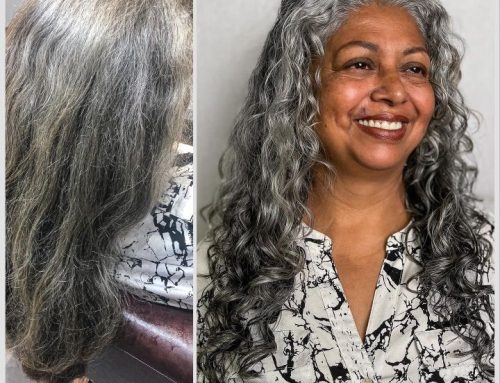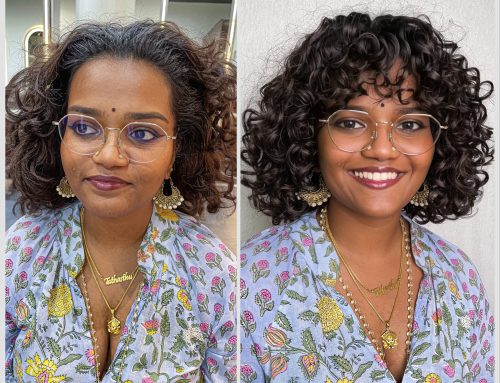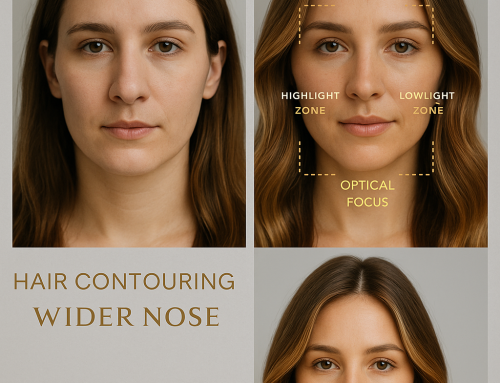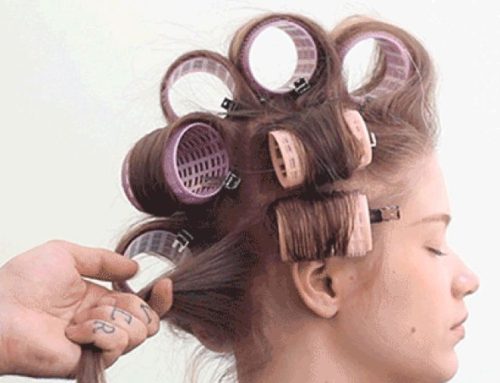When an undercut is recently cut, it looks fantastic. But when an undercut starts to grow out, you get massive length discrepancies, which may be very unattractive.
You have come to the correct site if you are pondering on the way to grow out an undercut without going through the unsightly and uncomfortable transition stage. We will go through a few different techniques for growing out your undercut, blending in the length discrepancies, thus making the length differences less noticeable.
You will find it simple and hassle-free to transit the growing out of your undercut into something new with the help of this instruction, regardless of whether you are dealing with a grown-out undercut with previously shaved sides and back or a grown-out neck undercut with otherwise long hair.
Keys to a Simple Transition: Growing Out an Undercut
- Trim the top to transit into a fade while letting the sides and back grow.
- Keep the top longer and part it to transit to the two-block haircut.
- Do not let it grow out at all; instead, shave it into a buzz cut.
- Get a short bob, or pixie, or cover an undercut at the neck as it grows.
Before having an undercut, we often ask ourselves, “Will this look well on me? How should my undercut be styled? Should I shave any more hair? Unfortunately, we often neglect to consider what we will do when the time comes to grow out.
The good news is that it is certainly feasible to grow out an undercut more gracefully—you know, without that awful, uneven transition period.
The process does take time, which is terrible news, but there are several pretty effective and good quick cuts you can carry out! Determining the kind of cut or style you want is the first step in learning how to grow an undercut more seamlessly and aesthetically.
If necessary, you can let the sides and back grow out a little before cutting the top and transiting it to a tapered or fade cut. If you want neat and clean-cut appearances and styles that are not too long or shaggy, this is a perfect choice.
If you want a two-block haircut, you could want to let the sides, top and back grow out while utilizing the additional length on top to cover and conceal the shorter regions. If you want somewhat longer, messy, stylish styles, this is a fantastic choice for you.
If you do not believe you will have the patience to wait through the growing-out stage, you may always have a buzz cut to shave your head to an evenly distributed length. However, many people will not find this to be the best solution, but if you are desperate to eliminate any length disparities and cannot wait for your hair to grow out, it can be your only choice. Or you can choose a bob, pixie, or other short, cropped haircut if you have long hair with an undercut at the nape.
Additionally, you may choose haircuts that conceal the shorter sections physically as it becomes longer. For both men and women who have shaved smaller sections but left the rest of the hair longer, this is the ideal choice.
These grow-out tips will be covered in greater depth soon. Let us start by discussing some of the difficulties you could encounter while you grow out an undercut and how to overcome them.
Growing Out of an Undercut: The Challenges
Why is it so difficult to grow out undercuts? Growing an undercut out is difficult due to the nature of the cut. Here are some potential concerns you can encounter while growing out your undercut, along with advice on how to handle them should you do so.
Significant Length Differences
The Problem: Sections of the hair are shaved off in hairstyles with undercut, while others are left considerably longer. One of the reasons it is difficult to grow an undercut out is the length contrast. You will be left with shorter sections which are slow-growing that sharply contrast the longer sections causing them to be tapered, not blended or faded to make things more even out.
The Solution: Use the longer pieces to cover the shorter regions, cut the top to hide the length difference, or attempt a high bald fade to begin to blend the two distinct lengths together to solve this issue.
It will be simpler to start blending and transitioning the length discrepancies so they seem less odd if the previously-shaved areas are given a little more time to grow out (6-8 weeks). As a final resort, you may shave your head to have uniformly short hair all over like a buzz hairstyle.
Slow Growing Hair
The Problem: Around half an inch a month, or six inches a year, is the average rate of hair growth. You will have to wait a bit for your shaved areas to “catch up” to the long length hair on top if you attempt to accumulate the length. Having such pronounced variances in length might make it seem somewhat awkward in the meantime.
The Solution: Trimming the longer areas to bring them nearer in length to the short ones is one technique to get around the problem of slow growth if you have a “short” undercut, not a nape undercut. The shorter areas will quickly catch up in length, so you will not have to wait as long. Then, a fast taper cut may aid in fusing the two pieces to seem more seamless.
Another excellent solution for slow growth is to get a haircut with a long top and short sides and back, such as the two-block haircut. Avoid cutting the shorter sides and back as well as instead let the top grow out and part it down the center or to the side.
As a result, the longer pieces will be able to dangle over the shorter ones and acquire a stylish, shaggy appearance. The best option for slow-growing of nape undercuts is to cover the shorter areas with the longer hair until it has grown out.
The simplest solution, unless you are prepared to go extremely short—which may be adorable, like a short inverted bob or pixie cut—is to use loose and down styles or buns/ low ponytails.
The Urge to Start Over
The Problem: You may undoubtedly feel inclined to give up and get a new undercut after letting your current undercut grow out for a few weeks. The short areas grow out so slowly that it becomes annoying, and you could be compelled to wear styles you do not like to hide the new growth while you are waiting. If you find yourself believing that another undercut is the best way to solve the problem, do not be shocked.
The Solution: Getting another undercut is not one of the options for coping with the frustration of an undercut that is not growing out as soon or as attractive as you would desire. Shaving the short areas once again will only give you a little window of time until you find yourself back where you started, which is why you have chosen to move away from the undercut.
If you have determined that you are ready for anything new, resist the desire to continue in the current style which is a common behaviour. To get through it once and for all, be patient and attempt the transitional cuts and styles you will see below!
Certain Hairstyles Make Growing Out Sections Noticeable
The Problem: When you first try to grow out your undercut, you will discover that several parting and styling techniques make the growing out areas more noticeable. The shorter length undercut areas you are growing out of will be more noticeable if you slick the long top back with the short undercut, put your longer hair up into a bun or a high ponytail with a nape undercut, or brush the hair fully to one side.
The Solution: Instead, go for hairstyles and parting techniques that conceal and hide the areas you are growing out of. To cover and hide more of the short length on the sides of a short undercut with a longer top and previously shaved sides and back, part the top down at the center rather than slicking it to one side or the back.
If you have an undercut at the nape that you are growing out of, try wearing low ponytails and buns, or let your hair flow freely down and freestyle to keep the undercut concealed and covered.
All Lengths: Growing Out an Undercut in Style
Can you pull off a grown-out undercut? With the appropriate styles and techniques, yes! To grow out your undercut and avoid as much of the uncomfortable and unsightly look during the transitional period, you can try some of these stylish shortcuts.
How to Let a Short Undercut Grow Out
When we refer to haircuts as “short undercuts,” we mean those that leave the top of the head with longer length while have the sides and back shaved. Although to grow out a short undercut may be challenging, using these helpful shortcuts can make the process simpler and more attractive.
Fade or a Tapered Cut Transition
The difference in hair lengths of a growing-out undercut may be masked by blending it harmoniously with a tapered cut or fade. You must perform three things to transit from a short undercut to a tapered or fade haircut which make it appears even more seamless:
If the top is very long, cut it a bit shorter.
Be patient and allow 4-6 weeks for the sides and back to grow out.
Ask your barber to create a high fade for you or a taper haircut with the two different lengths blended together.
You will have around half an inch of fresh hair growth to deal with after giving the sides and back a month or two to grow out. The longer hair on top may now be blended and tapered more easily to match the shorter hair on the sides and back.
To somewhat clean or even your hair up a little, you can also choose a high fade (take a moment to look at the many kinds of fades). Your best bet will be skin fade or high blad if you have no patience for the sides and back to grow out. With the blending of the longer hair on top, it portrays a clean and neat shaved sides and back that reach your temples.
Transiting Into a Two-Block Haircut
Long hair on top and unblended as well as considerably shorter length on the sides and back to define a two-block cut. This hairstyle resembles a mushroom cut or bowl cut, but without the graduated length finishing since the long top is designed to drop down over the sides and back.
You must perform two things to convert a growing-out undercut into a two-block cut:
For at least a month, refrain from cutting any length off the top, back, or sides.
For maximum coverage, perform parting of the top section along the center; alternatively, have parting at the crown and spread it forward and down the sides.
To make your two-block cut appear a little more lived-in, natural and deliberate, you might have the ends of the longer top area slightly textured. While you wear this appearance, keep allowing the sides of your hair to grow longer. You will gather enough length after a few months to switch to other medium-length cuts or styles.
Get a Short Buzz Cut
You may always get a buzz cut if you just cannot wait for the length on the sides and back to grow out (or shave your head entirely). By doing this, you will be able to regain a consistent even length all-over without having to go through the annoying growing-out stage with varying lengths that need to be blended or tapered.
A short buzz cut could be the ideal way to grow out your undercut if you are not bothered by the length and are receptive to a big transformation.
Growing Out a Nape Undercut
It might be intimidating to start the grow-out process if you have been sporting an undercut at the nape with long hair. You will only be left with a short and small area of hair at the nape of your neck unless you drastically shorten your hair by have a short-inverted bob or pixie cut.
In such a situation of nape undercut, it will take years for it to fully grow out. Thankfully, there are several approaches you can undertake to shorten the grow-out time and make the process easier for the nape undercuts.
Wearing Your Hair Down
Wearing your hair down is the simplest method of covering up an undercut as it grows out (or half down, half up hairdo). This method works incredibly well so long there is adequate length in your hair to cover the nape of the neck. To keep the undercut sections at the nape covered, just be careful not to drag all of your hair around your shoulders!
Popping in a Claw Clip
The claw clips are effective accessories for styling and gathering your hair without exposing the growing-out short area where your undercut was hidden. Before clipping, twist the hair upward into a coil and pull the tail of the coil back down. Setting and arranging the ends to effectively conceal any shorter undercut sections that may be seen around the sides of the bottom.
Low Ponytail or Bun


Your undercut will be easily covered until it grows out if you wear your hair in a low ponytail or bun. To effectively hide the shorter undercut area, gather your hair as low as possible and fix it with an elastic band by tugging on the hair above the elastic as necessary. Add a scrunchie, bow, or ribbon to it to give it even more hiding power!
Going for a Shorter Cut
Another excellent strategy to transform your appearance and move away from your nape undercut is to get a new shorter haircut. It is the perfect opportunity to go short if you have been considering it. To give your mane an edge, consider going for a short, asymmetrical bob like the one in the image, a buzz cut, an inverted bob, a pixie cut, or an ultra-short crop.
Final Things and Tips to Consider
If you are growing out an undercut, the texture is extremely helpful. It could be more difficult to conceal or transition an undercut as it grows out if your hair is pin-straight. It is undoubtedly simpler with waves and curls since they give intriguing texture and can effectively hide any length disparities, making it less obvious. They also provide a lot of volumes, which can effectively cover an undercut at the nape!
Try not to worry too much. It might be challenging for grown-out undercuts to blend in with the rest of your hair, but it is not a major concern. Remind yourself that a little hair length difference will not destroy your appearance if you find yourself pondering a drastic haircut transformation just to completely cover up your undercut or continually making sure the undercut regions are covered. Do not worry too much about it; there are lots of ways in this article to provide tips for growing out your undercut by making it less obvious.
If you are considering having an undercut, keep our suggestions in mind. While growing out an undercut with style is not impossible, it is undoubtedly more difficult than other short haircuts, for instance, growing out a bob for women or simple tapered cut for men. If you are here obtaining advice in advance, please also make sure your hairstylist has educated you on what the consequence of the tedious undercut growing out process is to avoid any surprise if you are going for an undercut or any other haircuts that couples two unblended disconnected hair lengths!
Our recommendations also apply to haircuts with significantly varying hair length. When growing out practically any haircut with noticeable length changes, such as pompadours, asymmetrical bobs, two block cuts, fades, inverted bobs, and more, you may utilize much of the advice in this book. When in doubt, cutting the length short may typically make hair simple to blend or to create even length all-over, if you are going short enough.
Many people may not understand the commitment undercuts represent until after the event when they are truly experiencing it themselves. There are several methods to make the transition easier when you cut your hair into 2 drastically different lengths, but it will always be more challenging.
We hope some of the techniques, trims, and styles in this article will make the undercut transitional process simpler if you currently sport an undercut and are starting to grow it out.
We have got you – and your undercut – covered when it comes to adopting nape-concealing trends like the down or half-up styles, claw clip looks or low ponytails as well as moving into fades, tapered cuts, short bobs, pixies, or buzz cuts.







Leave A Comment